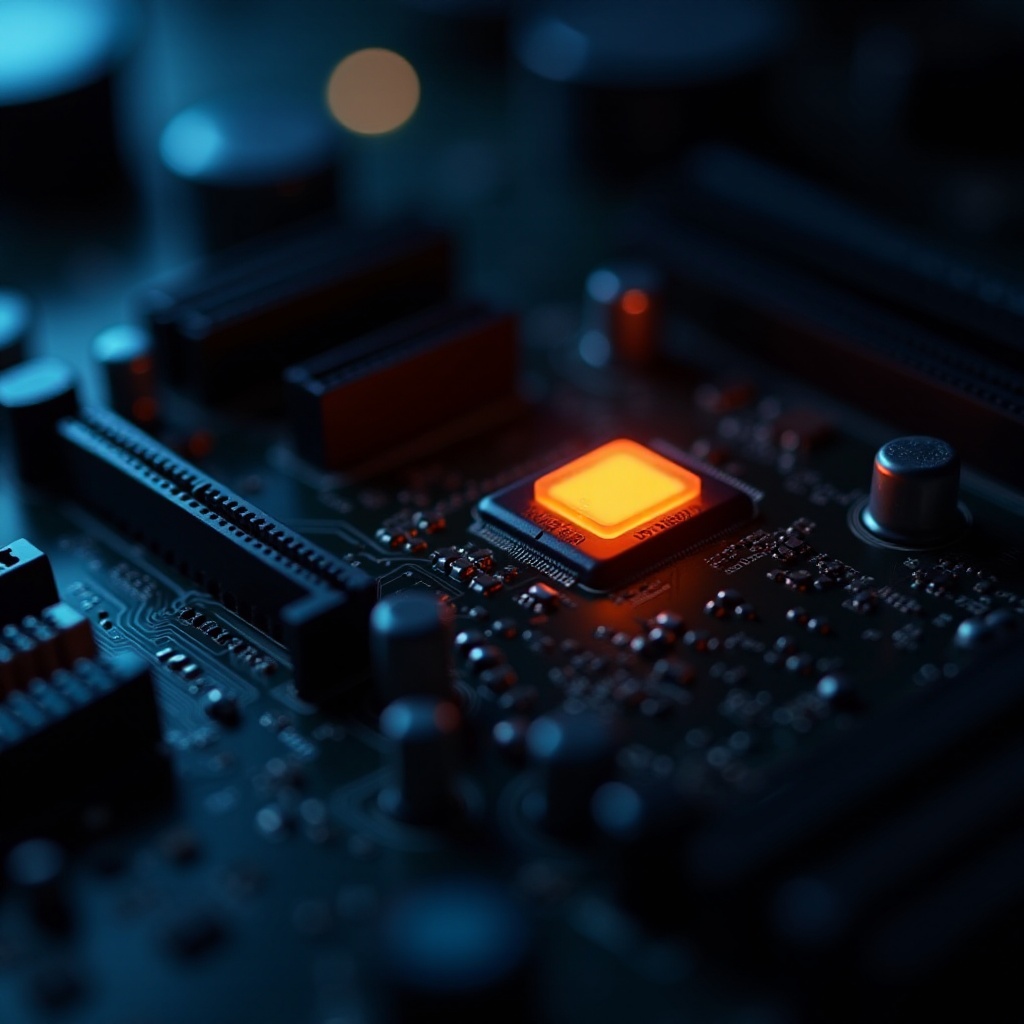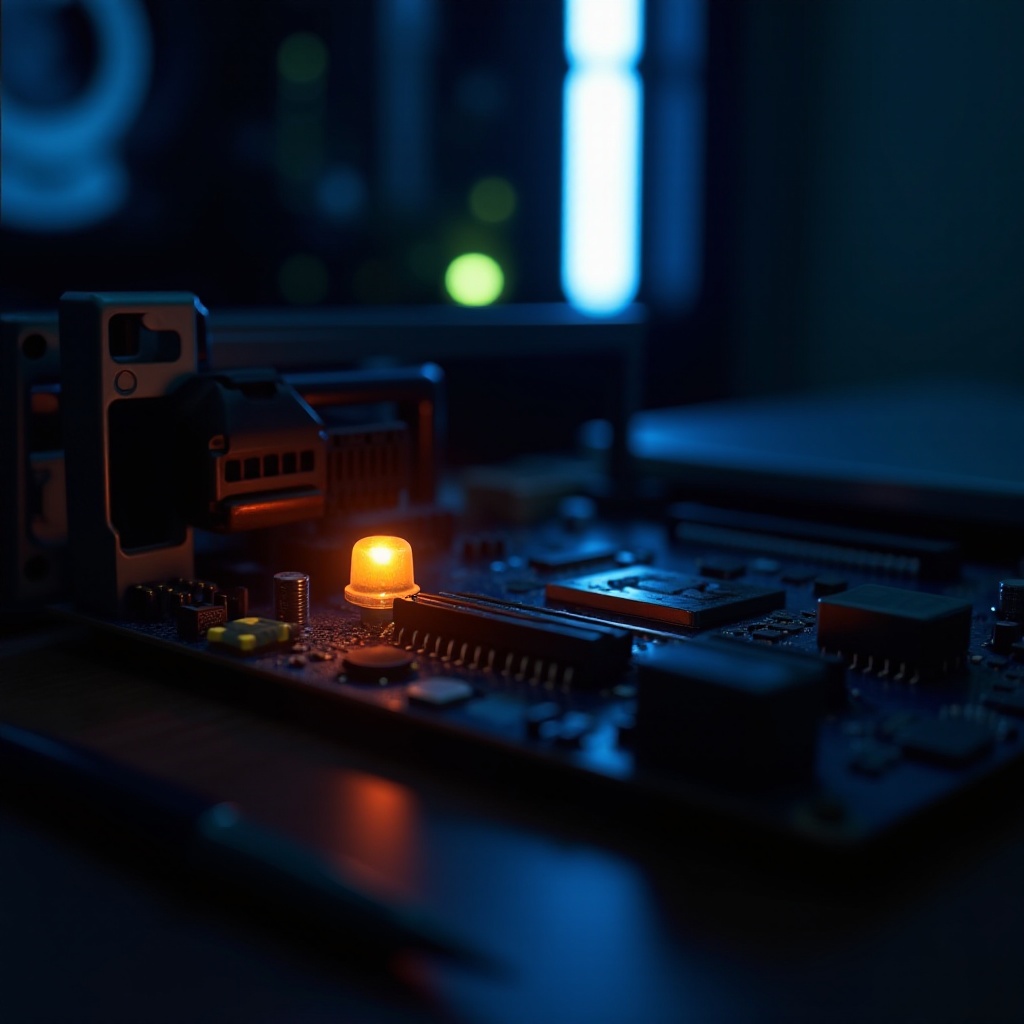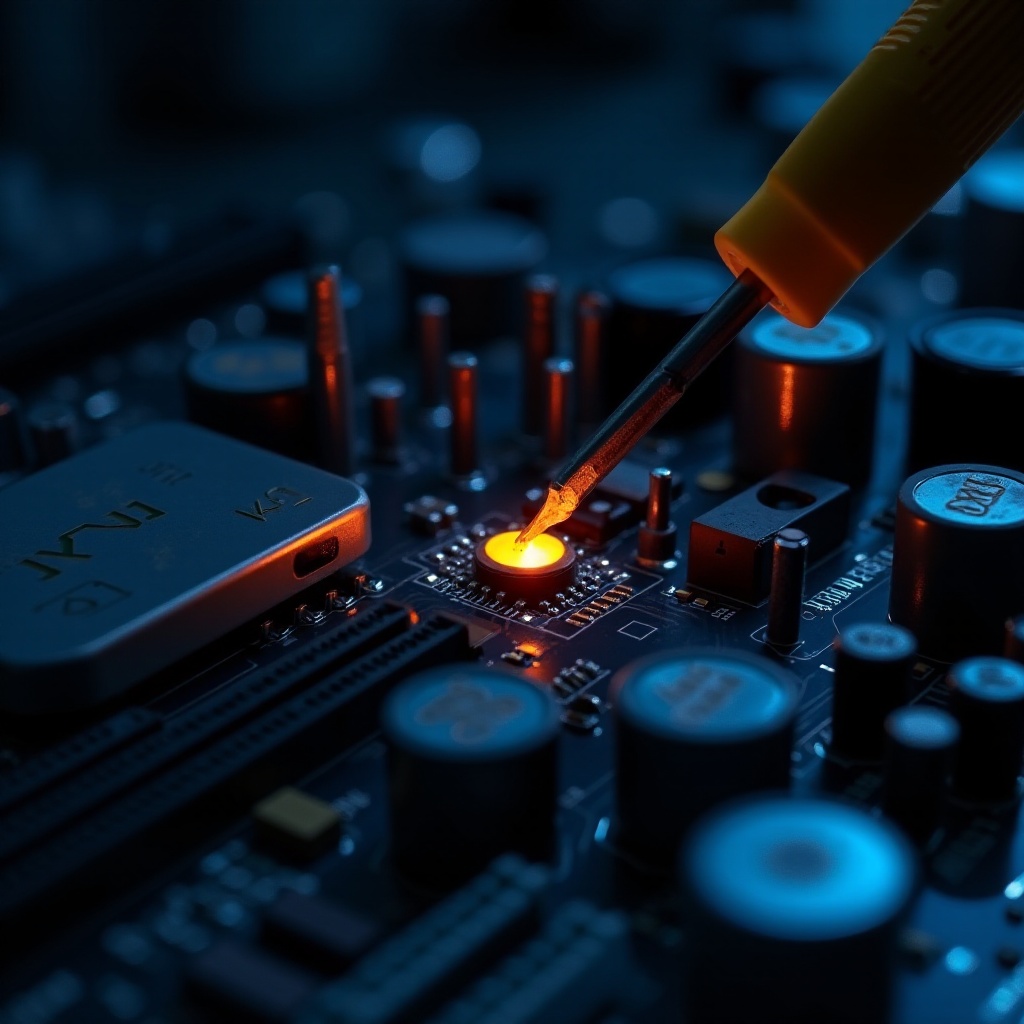How to Fix an Orange Light on Your Motherboard with No Display
Introduction
Encountering an orange light on your motherboard with no display can be a daunting experience for any PC user. It’s a signal that something is amiss, and pinpointing the exact issue is crucial for restoring your system. This comprehensive guide will help you understand what the orange light signifies and how to troubleshoot it effectively. We’ll walk through each step, from basic diagnostics to more advanced solutions, ensuring you can tackle the issue confidently and efficiently. By the end of this article, you’ll have the knowledge to resolve the problem and take preventive measures for future maintenance.

Understanding Motherboard LED Indicators
Motherboard LED indicators are designed to provide visual alerts about the status of various hardware components. When you see an orange light, it generally signifies a hardware problem or an issue related to the power or BIOS system. Each motherboard model might have slightly different color codes and indicators, so consulting your motherboard’s manual is always a good practice. Understanding these signals can be your first step in diagnosing the problem. The orange light often suggests that the system has power but is stuck in a pre-boot state, requiring a thorough inspection of connected components.
Basic Troubleshooting Steps
Starting with basic troubleshooting is essential before moving on to more complicated diagnostics. Follow these initial steps:
- Restart Your System: Sometimes a simple reboot can resolve many issues.
- Unplug and Reconnect: Disconnect all peripherals and internal hardware components, then reconnect them. This ensures all are properly seated.
- Check for Visible Damages: Inspect the motherboard and components for any visible signs of damage, such as burnt marks or dislodged capacitors.
These preliminary steps are often sufficient in resolving minor discrepancies that might be causing the orange light issue. If the problem persists, further examination of individual hardware components is necessary.
Checking Hardware Components
A more thorough inspection of your system’s hardware is crucial. Faulty components or improper connections might be causing the orange light error.
Inspecting RAM and Graphics Card
- RAM Check: Remove all RAM sticks and test each one individually in different slots to identify a faulty stick or slot.
- Graphics Card Inspection: Ensure the graphics card is properly seated in the PCI slot. Try reseating or testing with a different card if available.
Ensuring Secure Cable Connections
- Double-check all internal cable connections, including the power cables and data cables connected to the motherboard.
- Ensure that the monitor is properly connected to the computer and receiving power.
Once you’ve verified that all components are securely connected and functioning, and if the issue still persists, it’s time to examine the power supply system.
Power Supply Diagnostics
The power supply unit (PSU) plays a crucial role in delivering the required electricity to your system, and issues here can manifest as an orange light on the motherboard.
Testing the PSU
- Use a PSU testing tool or multimeter to ensure the unit is delivering the correct voltage to your computer.
- Swap with a different, working PSU to determine if the current one is faulty.
Identifying Power Supply Issues
- Ensure that the power outlet and power cable are functional.
- Check for any signs of physical damage to the PSU, which might indicate the need for a replacement.
Addressing potential power issues might resolve the orange light error. If the problem persists, looking into the BIOS and firmware might hold the key.

BIOS and Firmware Solutions
The motherboard’s BIOS/firmware could potentially be the source of the issue, necessitating an update or reset.
Resetting or Updating BIOS
- Reset the BIOS by removing and reinserting the CMOS battery or using the motherboard’s reset jumper.
- Check for BIOS updates from the manufacturer’s website and apply them if available.
Troubleshooting Firmware Issues
- Ensure all firmware updates are compatible and correctly installed to prevent further issues.
- Consult the motherboard manual for specific instructions on dealing with firmware-related problems.
If after these steps the orange light issue persists, advanced troubleshooting may be necessary.
Advanced Troubleshooting Techniques
When basic fixes aren’t effective, these techniques might help unravel the mystery behind the problematic orange light.
Utilizing Diagnostic Tools
- Use specialized diagnostic software to scan for hardware incompatibilities or potential failures.
- Tools like MemTest86 can be used to extensively test RAM modules for errors.
Consulting Manufacturer Manuals
- Detailed motherboard manuals provide specific error codes and troubleshooting guides.
- Utilize the manufacturer’s support forums or customer service for expert advice.
Sometimes, a deeper understanding of the system’s architecture is needed, which can be greatly assisted with the help of manufacturer resources.
Preventive Measures and Maintenance Tips
Routine care can prevent many motherboard issues.
Regular Cleaning and Inspection
- Clean dust from inside the case regularly to prevent overheating and contact issues.
- Inspect all components for wear and damage periodically.
Importance of Quality Components
- Invest in high-quality components known for their reliability.
- Always replace faulty parts with ones brand certified by your motherboard manufacturer.
Preventing issues is far better than reacting to them, and mindful maintenance is key.

Conclusion
An orange light on the motherboard accompanied by no display is not an unsolvable problem. By following the detailed troubleshooting and diagnostic steps outlined above, you can effectively address and resolve the issue. Remember, understanding your system and investing in regular maintenance can save you from future headaches. Armed with this knowledge, you’re better prepared to manage and maintain your PC.
Frequently Asked Questions
What does the orange light on my motherboard mean?
The orange light typically signifies a hardware issue or power problem within the system.
Can a faulty PSU cause no display issues?
Yes, a malfunctioning power supply unit can result in insufficient power delivery, leading to no display.
How can I prevent motherboard issues in the future?
Regular maintenance, quality components, and careful system monitoring will aid in preventing future issues.
